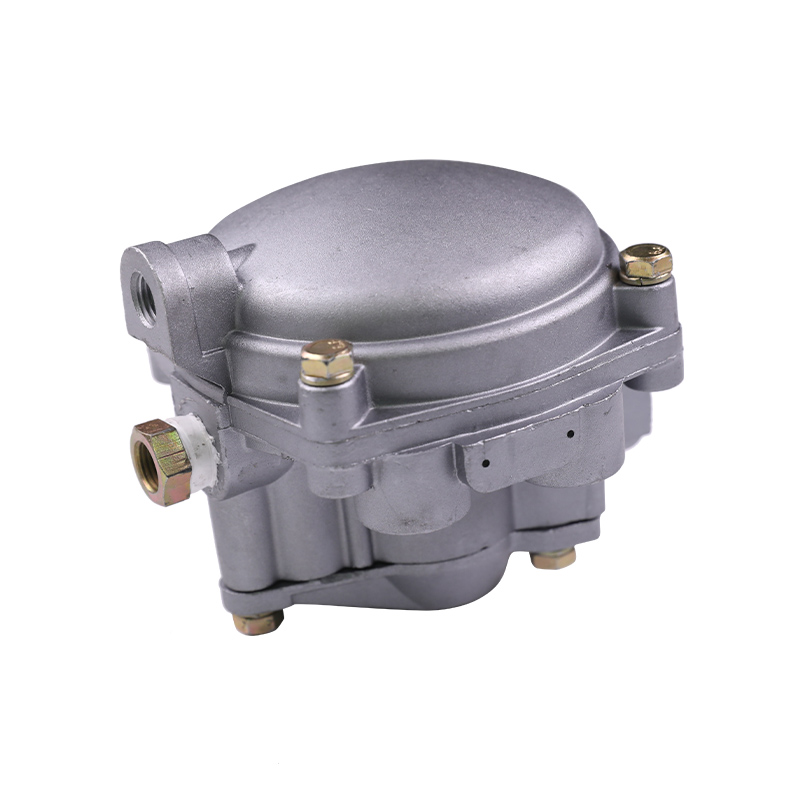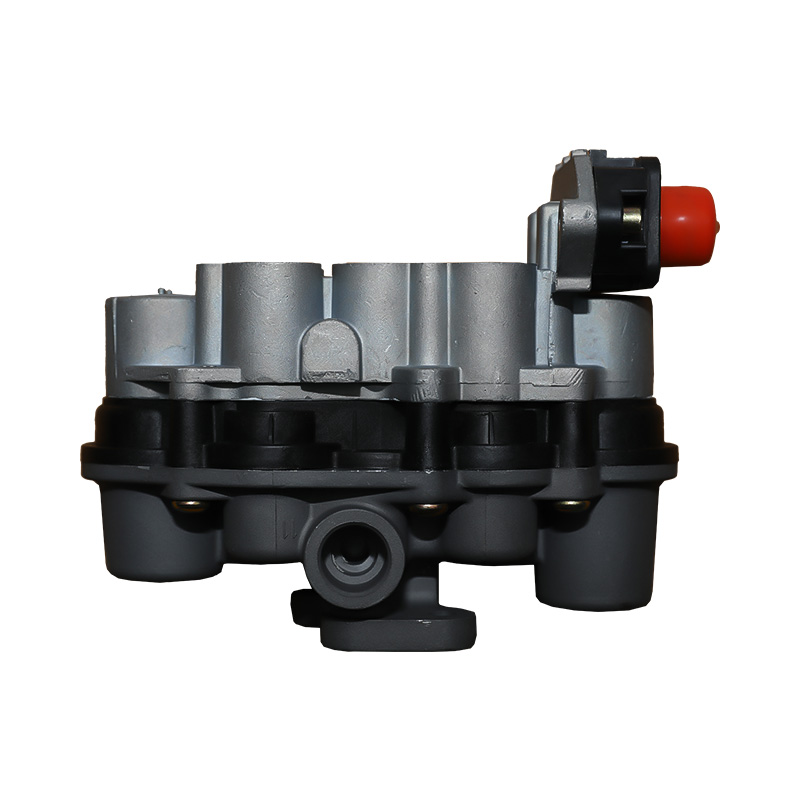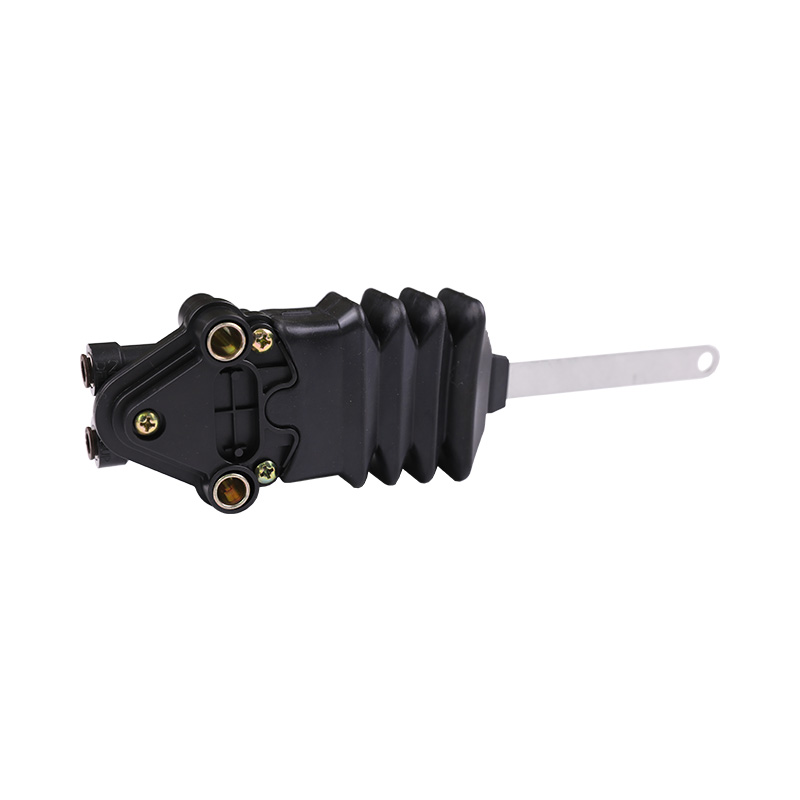The air dryer filter is one of the most important components in the compressed air system. Its main function is to remove moisture, oil and other impurities from the compressed air to keep the air dry and clean. In order to ensure efficient filtering performance, air dryer filters use a variety of different materials. These materials must not only have excellent filtering capabilities, but also be durable, economical and easy to maintain.
Common air dryer filter materials
Activated carbon
Activated carbon is one of the commonly used adsorption materials in air dryer filters. Its surface has a large number of tiny pores, which can effectively adsorb moisture, oil mist and other particles. Activated carbon filter elements perform well in removing oil, gas and moisture, and are especially suitable for compressed air systems that require high cleanliness. During use, activated carbon can firmly fix pollutants on its surface through physical adsorption, thereby ensuring dry and clean air.
Synthetic fiber
Synthetic fiber material is a high-efficiency filter material that is widely used in air dryer filter elements. Synthetic fiber not only has high filtering accuracy, but also can maintain good filtering effect under large air flow. Common synthetic fiber materials include polyester, polypropylene, etc. These materials are effective in removing moisture and oil, and are particularly suitable for working environments with high humidity and high oil mist. Synthetic fiber filter elements have a long service life and are easy to clean and maintain.
Stainless steel wire mesh
Stainless steel wire mesh filter elements are simple and durable filter elements suitable for harsh working conditions. Its advantages are high temperature resistance, corrosion resistance, and strong pressure resistance, so it can adapt to various high temperature and harsh working environments. Stainless steel wire mesh filter elements can filter large particles and impurities, and are often used in air filtration systems that require higher precision. In addition, due to the special nature of stainless steel, its filter element has a long service life and is easy to maintain.
Ceramic material
Ceramic material filter elements are usually used in high-precision air drying and filtering applications. Ceramic materials themselves have excellent chemical stability and can maintain their performance in high temperature environments. Therefore, they are often used in special industrial applications such as aerospace, chemical industry and other fields. The advantages of ceramic filter elements are strong corrosion resistance, ability to withstand extreme working conditions, and good mechanical strength, which can effectively prevent particles and moisture in compressed air from entering the system.
Non-woven fabric
Non-woven fabric is a filter material made of fiber or textile by hot pressing, chemical bonding, etc. It has good filtering performance and can work continuously under high flow conditions. Non-woven filter elements are usually used in medium and low precision air dryer systems, especially in applications that do not require extremely high filtering accuracy. The filtering capacity of non-woven fabrics is affected by its density and structure, and it has a high cost-effectiveness and is suitable for long-term use.
Selection of air dryer filter element material
Choosing the right filter element material can not only improve the efficiency of the air dryer, but also extend the service life of the equipment. Filter elements of different materials have different filtering effects and applicable occasions, so they need to be selected according to specific needs.
High precision requirements: If the system requires higher air cleanliness, it is usually recommended to use activated carbon, ceramic materials or synthetic fiber filter elements. These materials have strong adsorption and filtering accuracy, and can remove tiny oil mist and moisture in the air.
High flow requirements: For large flow compressed air systems, it is recommended to use synthetic fiber or stainless steel mesh filter elements. These materials can still maintain good filtering effects under large air flow, and will not cause excessive pressure drop, ensuring the normal operation of the system.
Extreme environmental conditions: In high temperature or corrosive environments, ceramic filters or stainless steel mesh filters are often the best choice. They can maintain stable filtration performance in extreme temperatures and are resistant to corrosion and wear.
Impact of air dryer filter material on performance
The material of the air dryer filter directly affects the filtration effect, equipment operating efficiency and service life. Filters of different materials have different filtration performance, durability and applicable environments. Improper selection may lead to poor filtration effect, increased equipment wear and even system failure.
Filter accuracy: Activated carbon and synthetic fiber filter elements usually have higher filtration accuracy and can effectively remove oil mist, moisture and fine impurities from the air. Stainless steel mesh and non-woven filter elements are suitable for filtering larger particles, with relatively lower accuracy, but can work continuously at higher flow rates.
Durability: Stainless steel and ceramic filter elements are superior to other materials in terms of durability and can operate stably in high temperature, high pressure and corrosive environments, while synthetic fiber and activated carbon filter elements may require more frequent replacement or maintenance.
Cost-effectiveness: Non-woven and synthetic fiber filter elements are cost-effective and suitable for most standard industrial applications. Activated carbon and ceramic filters are relatively expensive, but their filtering effect and durability are usually better, and they are suitable for occasions with higher air quality requirements.






